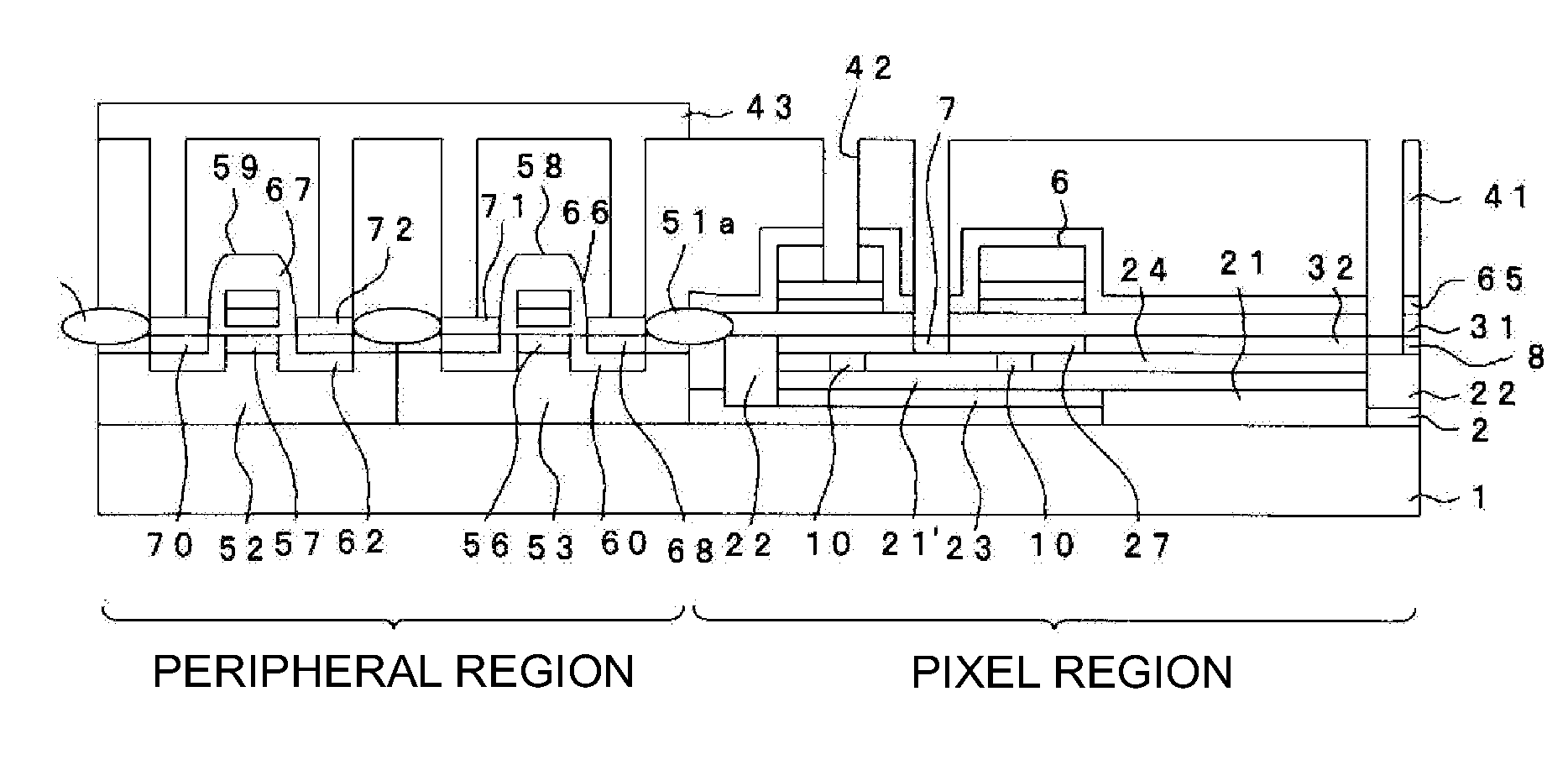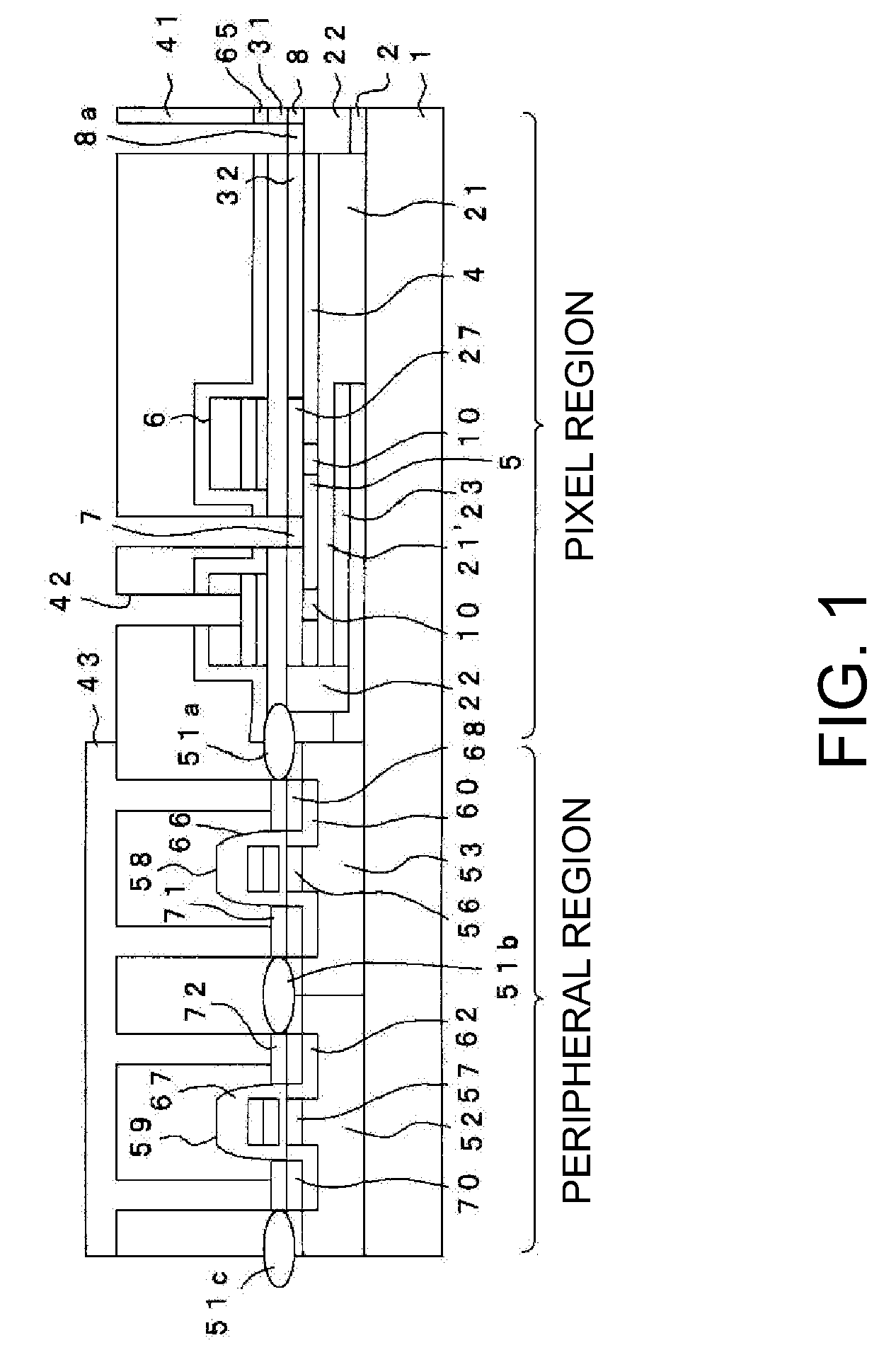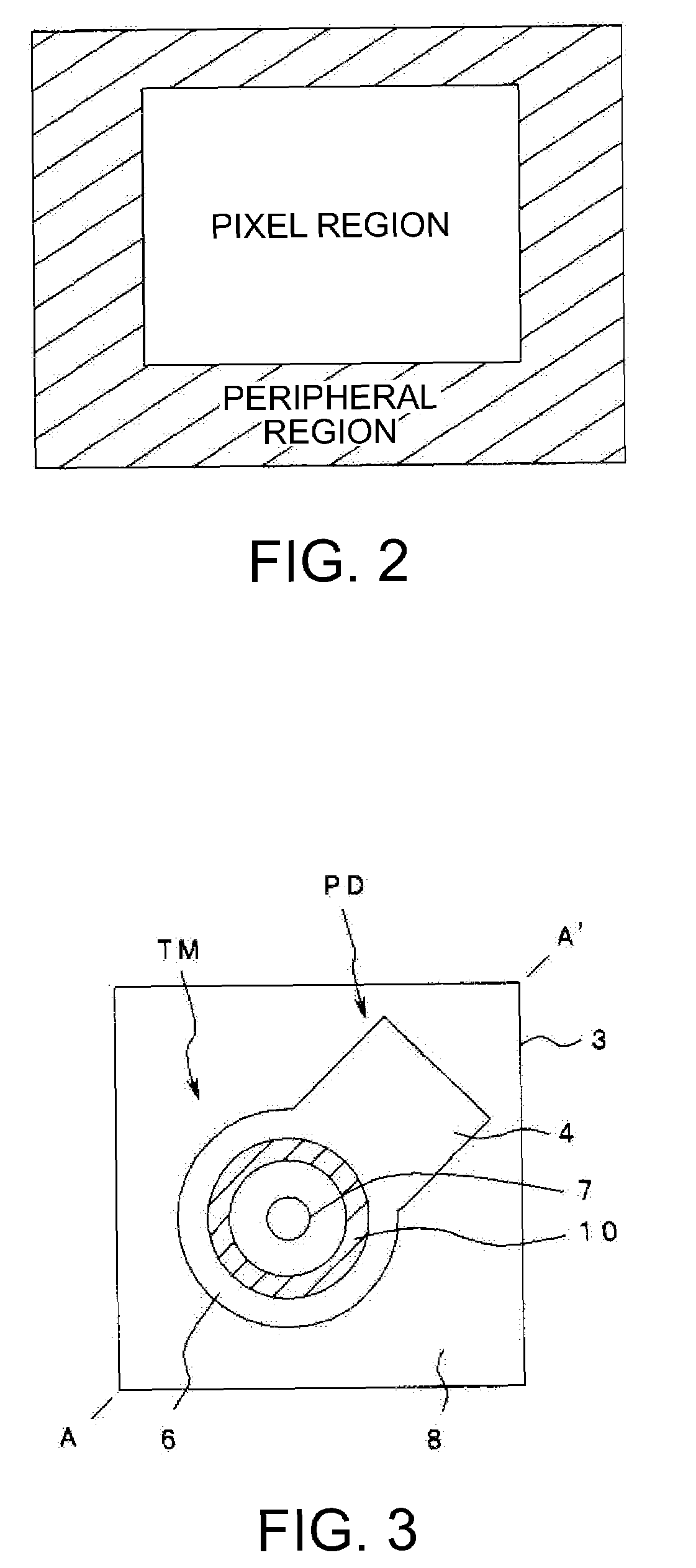Solid-state imaging device
a solid-state imaging and imaging device technology, applied in the direction of radio frequency controlled devices, instruments, television systems, etc., can solve the problems of low process cost, low power consumption of mos-type image sensors, and defects in sensor cells, so as to prevent the occurrence of damage prevent the occurrence of defects in the pixel region, and prevent the occurrence of damag
- Summary
- Abstract
- Description
- Claims
- Application Information
AI Technical Summary
Benefits of technology
Problems solved by technology
Method used
Image
Examples
Embodiment Construction
[0038]Embodiments of the present invention will now be described in detail below with reference to the drawings. FIG. 1 through FIG. 14 relate to an embodiment according to the present invention. FIG. 1 is a sectional view schematically showing a cross-section of a solid-state imaging device according to the present embodiment. FIG. 2 is an explanatory diagram illustrating a pixel region and a peripheral region of the solid-state imaging device according to the present embodiment. FIG. 3 is an explanatory diagram showing a planar shape of one sensor cell of the solid-state imaging device according to the present embodiment. Further, FIG. 1 is a sectional view showing a part of a section taken along the line A-A′ of FIG. 3. FIG. 4 is a circuit block diagram showing the entire structure of an element by an equivalent circuit. FIG. 5 through FIG. 14 are process diagrams for illustrating a method of manufacturing. Further, in the above drawings, the scale of each layer and each member a...
PUM
 Login to View More
Login to View More Abstract
Description
Claims
Application Information
 Login to View More
Login to View More - R&D
- Intellectual Property
- Life Sciences
- Materials
- Tech Scout
- Unparalleled Data Quality
- Higher Quality Content
- 60% Fewer Hallucinations
Browse by: Latest US Patents, China's latest patents, Technical Efficacy Thesaurus, Application Domain, Technology Topic, Popular Technical Reports.
© 2025 PatSnap. All rights reserved.Legal|Privacy policy|Modern Slavery Act Transparency Statement|Sitemap|About US| Contact US: help@patsnap.com



